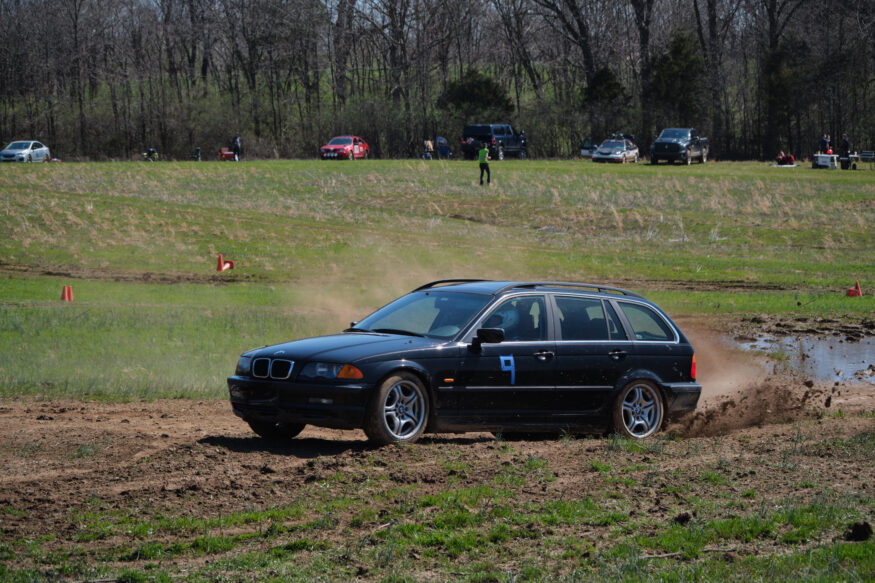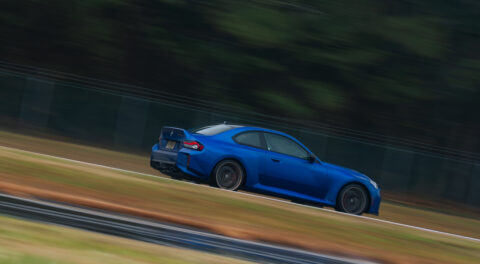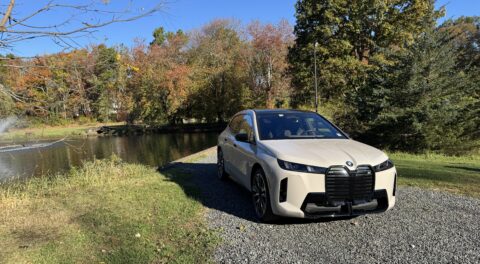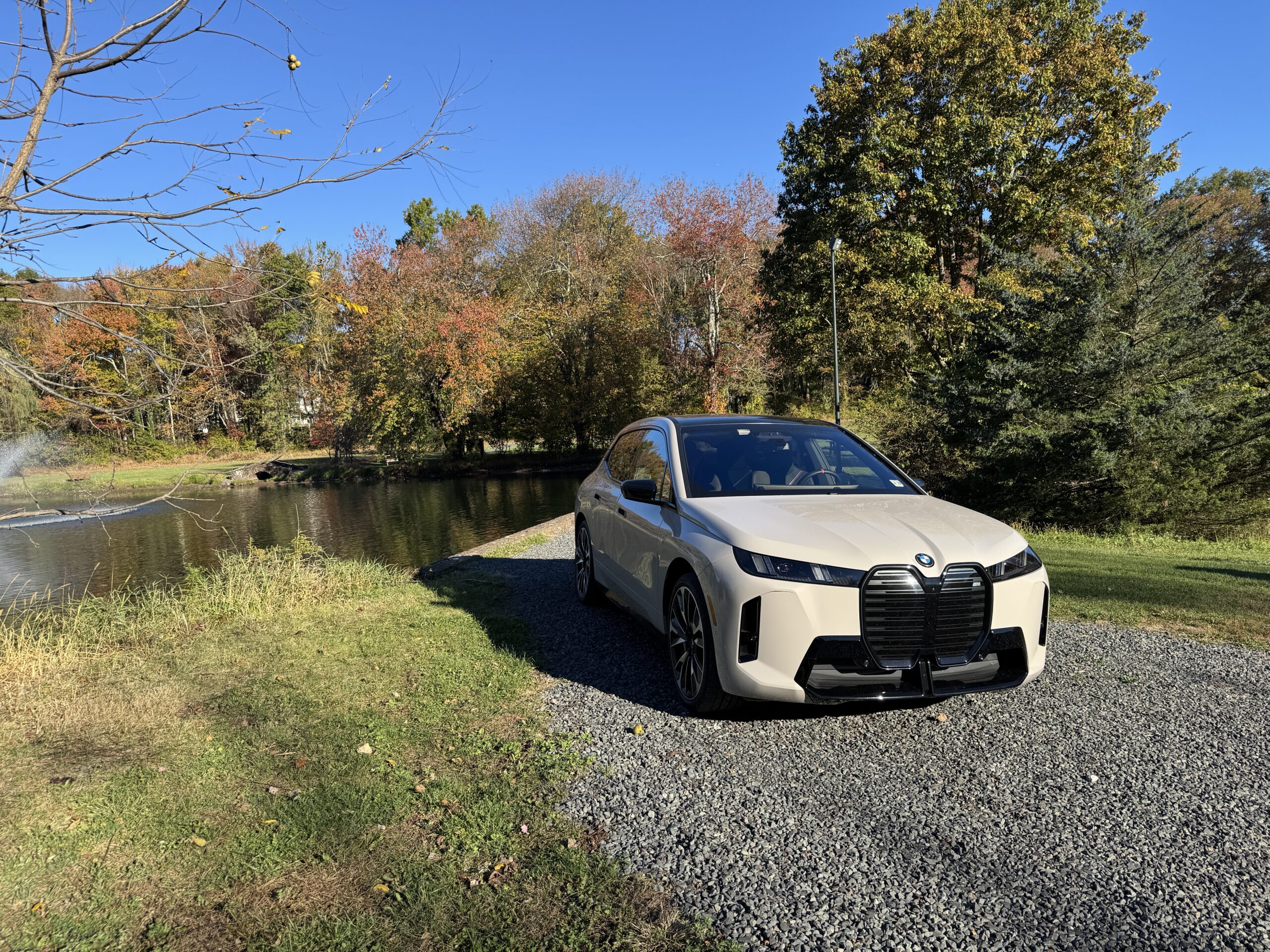Stage Rally fans often ask me, “How do I get started in rally?” My answer is always the same: “Rallycross.” If you are unfamiliar with the sport, Rallycross is an entry-level motorsports event held on mixed surfaces with a course created from traffic cones. It’s a great way for drivers to broaden their car-control skills by taking their car off the pavement and onto surfaces that are most commonly grass, dirt, or gravel. Stage rally requires a fully prepared race car with layers of safety equipment. And rightfully so, because you’re racing down hazard-lined roadways and around blind corners at high speeds. Rallycross lessens the stakes and allows you to begin learning the basics of loose surface driving in just a stock vehicle in a safe environment. The vast majority of rally drivers that I know got their start in Rallycross in a stock vehicle—including myself!
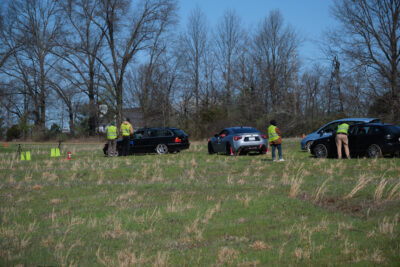
That’s one good looking touring! [Photo by Calvin Cooper.]
The forecast leading up to the event called for plenty of rain on race day. The course is set up in a field that used to grow corn and soy, but is now covered in patches of grass, wild onion, and wildflowers. The car I would be competing with is the only (nearly) stock vehicle I own: An M54B30-swapped 1999 BMW 325i Touring with a proper six-speed transmission. Yes, it may sound like I’m contradicting myself by saying an engine-swapped car is nearly stock, but even with the drivetrain swap, it’s essentially a stock Sport-Package car with around 150,000 miles on the clock. Since this touring is my daily and my race cars tend to get all the new-parts love, it sits on tired struts, an open differential, and worn all-season tires, but it’s in otherwise good working condition. To further test myself (and the 325i), I was sharing it with (and coaching) a first time Rallycross driver.
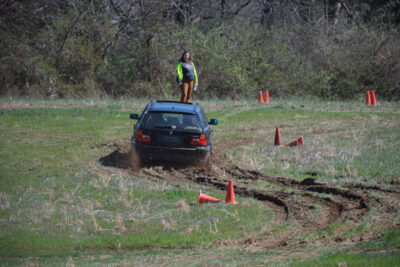
Kelsey races between the cones through deep ruts. [Photo by Calvin Cooper.]
Once the course was hot, I stuffed my head into my helmet and set off on my first run. The worn tires and open diff struggled to find consistent traction on the soft ground underneath us, so the name of the game was momentum and throttle control. Ruts began forming and growing deeper with each pass. When competing in thick mud, you have to use enough throttle to keep the mud slung out of the tires, but not so much that you lose all traction. Typically, in a rear-wheel-drive car, I would use my left foot on the brake to limit wheel slip and to also assist with weight transfer, but after the first couple of runs I noticed I needed to dig into the brake pedal harder and harder. By my third run as I flew through the finish I stepped on the brake pedal and it squished all the way to the floor. As I pumped the brakes, I added “brake fluid flush” to my mental to-do list. A couple cars got stuck and had to be pulled out, but thankfully my touring wasn’t one of them.
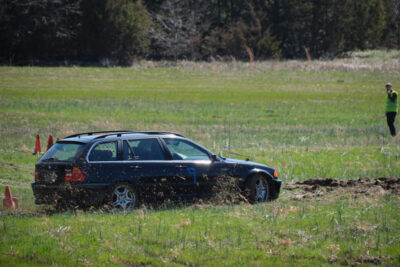
[Photo by Calvin Cooper.]

Sliding around a hairpin and slinging mud. [Photo by Calvin Cooper.]
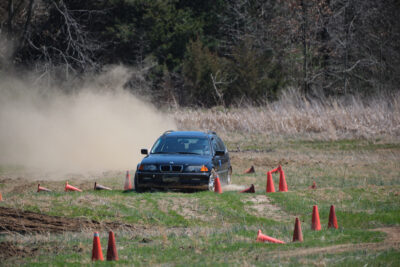
The course began to dry out and now cars were starting to throw some dust. [Photo by Calvin Cooper.]
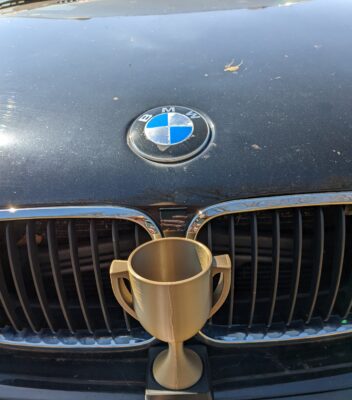
Third place overall is an exciting result in such tricky conditions. Especially against better-prepared cars.
In Rallycross, every run counts and all run times are added together. The fastest cumulative time, including penalties, wins. After everyone’s times were finalized, I was thrilled to be awarded the second fastest rear-wheel-drive car and third fastest driver overall. Though my 24-year-old 325i Touring was completely under-prepared for the event, I feel it fared quite well. I made short work of returning the touring to daily driver status. Most of the underbody plastic that was damaged during the event was torn from the wheel wells–it was already brittle with age. The caked-on mud did take a couple hours to scrape and power-wash away. It may not be a prepped rally car, but a stock BMW can be a lot of fun and very capable at Rallycross—especially in the rear-wheel-drive classes. So if you’re interested in Rallycross, get out there, go sideways, and have fun! —Kelsey Stephens
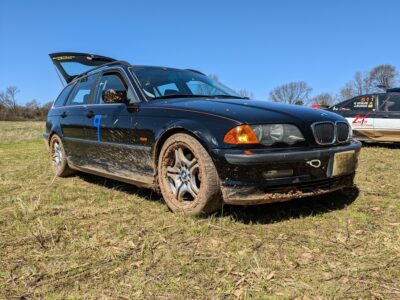
Mud was caked in the wheels, wheel wells, and to the underside of the car. I also recommend a power-washer.

